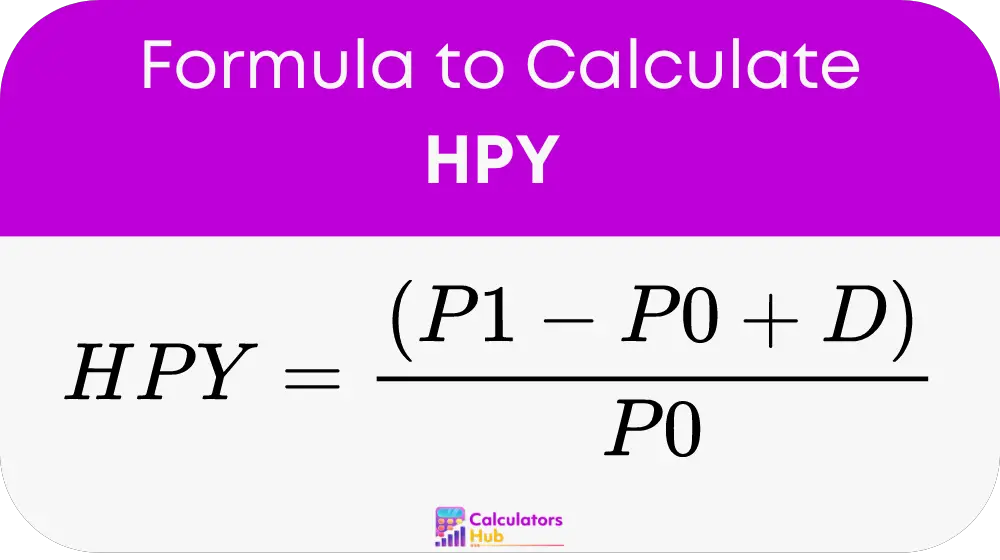The HPY Calculator is designed to provide investors with a clear measure of the return on an investment over the period it is held. It takes into account not only the price appreciation or depreciation but also any dividends or interest accrued during the holding period. This makes HPY an invaluable tool for assessing the effectiveness of investment strategies over time.
Formula of HPY Calculator
The formula to calculate HPY is straightforward yet powerful:

Where:
- P1 is the ending price of the investment,
- P0 is the beginning price of the investment,
- D represents dividends or interest received during the holding period.
Understanding each component of this formula can help investors make informed decisions about their investments.
Table of General Terms
To further aid in understanding, here's a table of general terms related to HPY:
| Term | Definition |
|---|---|
| P0 | The initial price of the investment at the beginning of the holding period. |
| P1 | The price of the investment at the end of the holding period. |
| D | Dividends or interest received during the holding period. |
This table should serve as a quick reference for new investors or anyone new to financial calculations.
Example of HPY Calculator
Consider an investment with an initial price (P0) of $100, an ending price (P1) of $110, and dividends received during the period totaling $5. Using our HPY formula:
HPY = ($110 - $100 + $5) / $100 = 0.15 or 15%
This example shows a 15% return on the investment over the holding period.
Most Common FAQs
A1: Dividends can significantly impact the total return, especially for income-generating investments, as they contribute directly to the gains over the holding period.
A2: The longer the holding period, the more opportunity for price variation and dividend accumulation, which can affect the total HPY.
A3: Yes, a negative HPY indicates that the total losses (including any potential price decrease and insufficient dividends) outweigh the initial investment, resulting in a net loss.